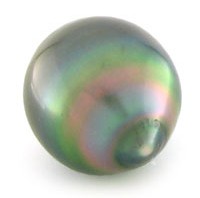Tahitian Black Pearls
Sunday, December 5, 2010 2:23:17 PM America/Los_Angeles

Different varieties of oysters produce different colors of pearls. Practically all of the pearls in the world are harvested from just three species of oysters: the Japanese Akoya, the South Sea pearl oyster, and the Tahitian black pearl oyster.Only the black-lipped oyster cultivated in Tahiti and the surrounding islands produces a black pearl. Suprisingly if you are offered a pure black pearl it is in all likelihood dyed to give it that color. Inexpensive freshwater pearls from China are dyed black to resemble the cultured pearls of Tahiti. True natural black pearls range in color from nearly white to gun metal grey. Some Tahitian pearls resemble a highly polished ball bearing. The body color is sometimes accented by overtones including shades of green, indigo, peach, purple, and blue. Individual pearls may even show a display of iridescent color that moves when turned. Shades that have the greenish overtone are called "peacock black" and are particularly prized. No one knows exactly what makes the various shades. Two nearly identical oysters harvested from the same lagoon may produce entirely different colors of pearls. It is thought that water temperature, trace elements in the water, and even the genetics of individual oysters all contribute to make each pearl a unique gem
Mike Ferber
You must be logged in to post a comment.
click here to log in




